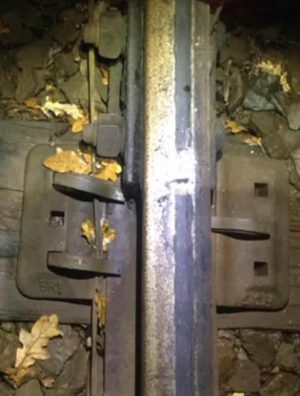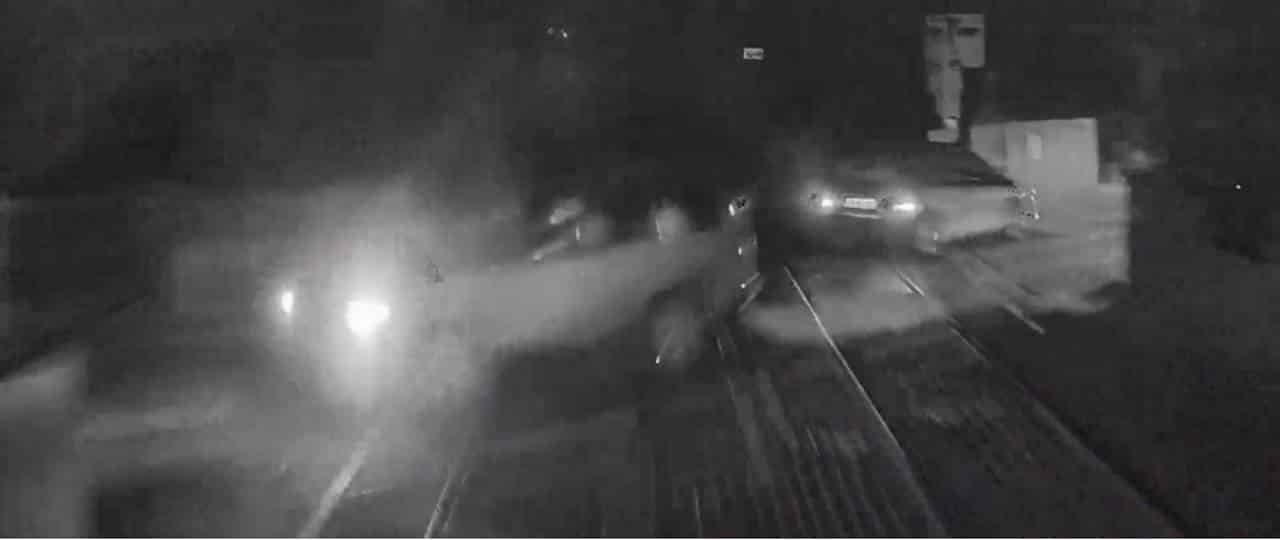The Rail Accident Investigation Branch (RAIB) has released their report into a near-miss incident between a train and cars at a level crossing in Norfolk.
Last year on the 24th November 2019, the barriers at Norwich Road level crossing, near New Rackheath, Norfolk, lifted as a train approached.
The passenger train was travelling from Norwich to Sheringham.
The barriers were down for the train approaching, however, when the train was around 150 metres from the crossing the barriers starting rising the emergency brake was applied on the train and the horn sounded.

Eight seconds after the barriers started to rise the amber road lights came on.
Two cars passed over the crossing in front of the train. The train reached the crossing less than half a second after the second car cleared the crossing, at this point, the train was travelling around 40mph.
Having passed over the crossing the train stopped around 230 metres beyond.
The RAIB investigation found that the level crossing equipment misinterpreted the position of the train and raised the barriers on the crossing while the train was approaching.
The misinterpretation was caused by poor electrical contact between the train and the track. This was caused by contamination of the railhead due to leaf-fall and atmospheric conditions.

The contamination had not been removed because no railhead treatment trains ran on the line to Sheringham at weekends.
The RAIB has made three recommendations addressed to Network Rail regarding the planning of autumn railhead treatment, guidance on the introduction of new trains and the configuration control of signalling equipment. RAIB also identified two learning points concerning the investigation of incidents and the signalling design process.
Simon French, Chief Inspector of Rail Accidents said:
“All too often the interaction between road users and the railway at level crossings leads to incidents and accidents. In many cases the actions of the road user are the immediate cause, but in this alarming event, deficiencies in the way the railway equipment operated placed two car drivers, and the people on a passenger train, in deadly danger through no fault of their own.
“Our investigation found that the installation at Norwich Road level crossing was a poor piece of engineering which had been in use for several years, and only luck had previously prevented an accident. A change in the type of train using the line exposed a weakness in the way that the crossing’s electronic control equipment was configured. This meant that the system lost sight of the approaching train and commanded the barriers to rise. Lessons from the trial of the crossing equipment in other locations, and from incidents involving the same equipment in service, had not been applied to the crossing at Norwich Road. It is important that the railway industry learns from this incident, and makes sure that it has effective processes in place to transfer such learning to where it is needed.”
Commenting on the report from the RAIB, Ellie Burrows, Network Rail Anglia route director and Jamie Burles, managing director for Greater Anglia said:
“Since the incident at Norwich Road level crossing, together with industry partners, we have worked tirelessly to understand how and why the incident occurred, and how we can make the railway safer for those working or travelling on trains or using level crossings.”
“The RAIB findings of contaminated tracks and their impact on the rail-wheel interface is consistent with our own detailed investigations, which have helped us understand how this incident occurred and led us to a series of actions in advance of any recommendations.”
“These actions include installing new track circuit treadles on the approach to the crossings that provide extra safety protection and enabled us to remove speed restrictions. We’re also cutting back trees and vegetation next to 26.5km of tracks to help prevent leaf fall that can lead to contaminated tracks and track circuit failures.”
“In addition, we have been proactive in increasing our cleaning regime for this autumn. From 18 November, we will run an extra treatment train across our rural routes. These trains, which already operate on the route, use high powered water to help blast the rails clear of any contamination. We will also have a dedicated leaf fall maintenance team for the Cromer branch.”
“We accept the RAIB recommendations, much of which we have already undertaken. Any incident such as this is taken extremely seriously, and we understand the severe disruption and frustration that this caused many of our passengers last autumn. We are confident that the steps we have taken together and are continuing to take will prevent a further similar incident.”
Greater Anglia has said they will be actively monitoring train wheels for contamination and undertaking any cleaning necessary during the autumn season.
The full report can be read on the RAIB website here
Where Next?
RailAdvent Plus
Support the website and get benefits in return
RailAdvent News
The latest railway news
RailAdvent Shop
Railway Prints, DVD’s / Blu-Ray’s and more
LocoStop Community
Come and share your railway pictures
Mainline UK Steam Info
Upcoming mainline steam tours/loco movements






Responses